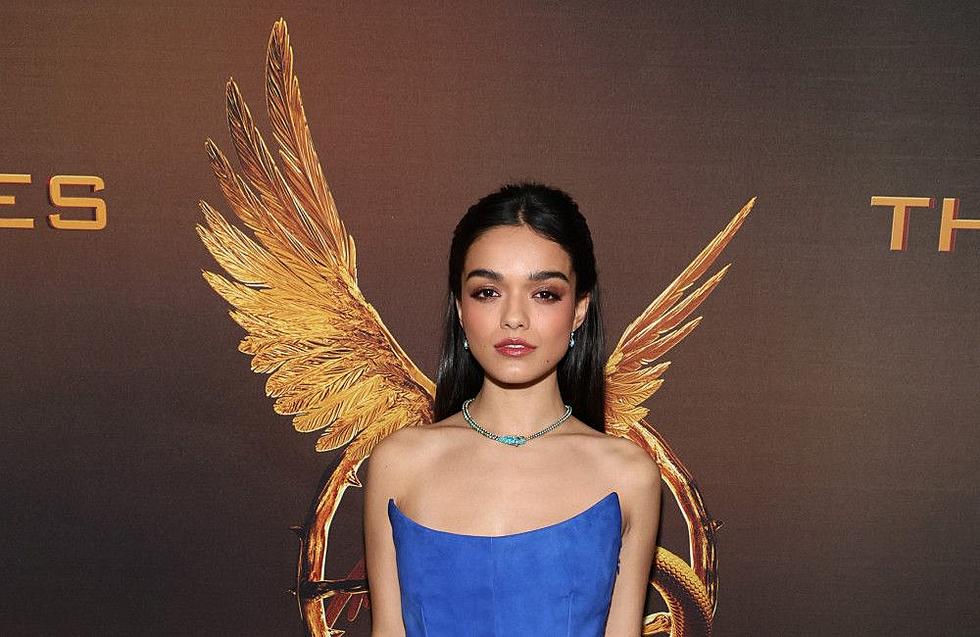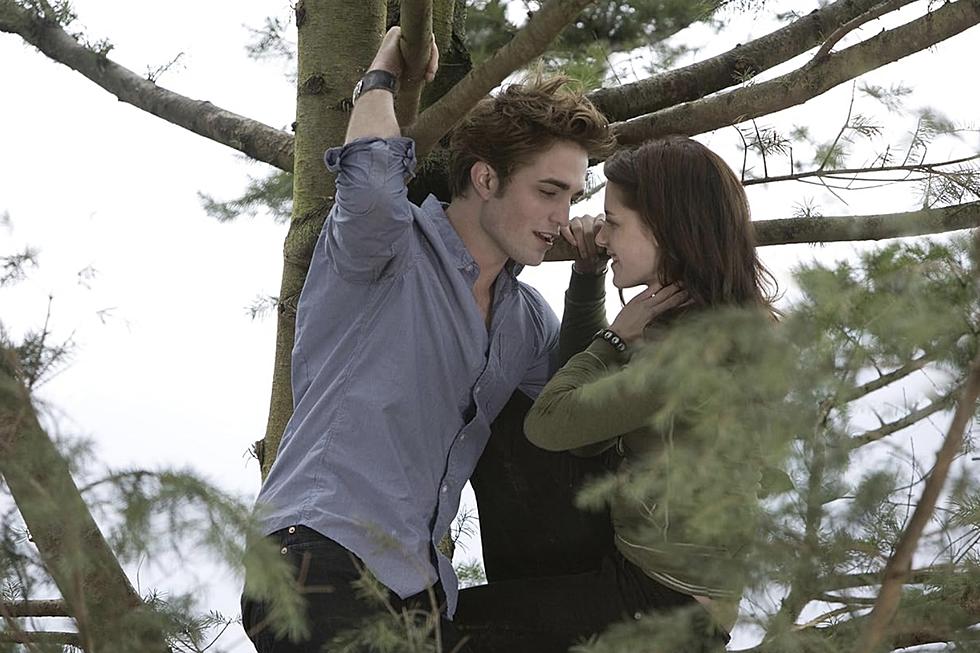
Split Decision: How Breaking Movies In Half is Ruining Hollywood Blockbusters
‘The Hunger Games: Mockingjay - Part 1’ might be the longest prologue in the history of world fiction. After two hours of political negotiations, nightmares, comas, inspiring monologues, training sequences, leisurely mess-hall conversations, and no less than two lengthy, mournful interludes in the same bombed-out village, the stage is finally set for… the closing credits. To get the payoff, you’ll have to wait a whole year—and pay a whole additional ticket price—for ‘The Hunger Games: Mockingjay - Part 2.’
‘Mockingjay’ is the latest example of perhaps the single most frustrating trend in modern Hollywood: The part-ification of franchise finales. It’s no longer enough to make a successful movie, or even a successful series of movies; Hollywood now extends—or dilutes, really—these cash cows even further, by breaking their concluding installments in half. You can’t judge a book by its cover, but you absolutely can judge a movie by its title, at least when that title includes the phrase “Part 1.” If it does, get ready for a languid, uneventful film full of set-up and absolutely zero payoff.
The part-ification of Hollywood was cemented by Warner Bros.’ financially ingenious and hugely successful decision to split the final Harry Potter book, ‘Harry Potter and the Deathly Hallows’ into two movies. J.K. Rowling’s novels got increasingly lengthy as the series progressed, with ‘Deathly Hallows’ topping out at 759 pages, and Potter fans had proven themselves among the most obsessively loyal in film history. They wanted to see everything; every character and set-piece, every bit of dialogue and plot twist. In the case of ‘Deathly Hallows,’ there was no way to cram it all into a single film.
“There’s something to be said for the huge amount of planning and creativity that goes into building these enormous narrative tapestries. But if the individual threads of that tapestry are boring or insufficient, it’s hard to care.”
So Warners split the story in half, and reaped the fiscal benefits; the two ‘Deathly Hallows’ made over $2.2 billion worldwide. Adjusted for inflation, ‘Deathly Hallows: Part 1’ was actually the least successful film in the entire franchise—suggesting at least some viewers skipped it to wait for the real finale—but it still made $295 million in the U.S. and another $664 million worldwide. By almost every conceivable measure, it was an unqualified success.
Except, perhaps, as a piece of self-contained entertainment. ‘Deathly Hallows: Part 1’ routinely winds up near or at the bottom of rankings of the ‘Harry Potter’ franchise, and it’s easy to see why: The whole (half of the) affair is about as exciting as a 146-minute visit to the Hogwarts infirmary waiting room. (This quote, from New York’s David Edelstein sums things up nicely: “There’s nothing wrong with... ‘Harry Potter and the Deathly Hallows: Part 1’ that couldn’t be solved if this were, as the Brits would say, ‘Harry Potter and the Deathly Hallows Full Stop.’”) Dividing a story and releasing each portion separately goes against every axiom of good cinematic storytelling. Less is more? You can throw that right out the window. Show don’t tell? In theory, two movies means twice as much opportunity to show stuff, but in practice, it means front-loading the first film with a ton of exposition, where lots of characters tell the audience what’s going on and what they’re feeling in pointless dialogue scenes primarily designed to pad out the movie’s runtime.
Even before Pottermania, studios had shown themselves willing to prolong lucrative franchises for the sake of surefire profits. Occasionally, when faced with a monster hit, they would make two sequels back-to-back, based on the thinking that it was easier and cheaper to mount one giant production instead of two (and that two guaranteed blockbusters were better than one). Universal made ‘Part II’ and ‘Part III’ of ‘Back to the Future’ at the same time; Warners did the same with ‘The Matrix Reloaded’ and ‘Revolutions.’ In both cases, the first sequels mostly laid the groundwork for the second with mixed creative results.
‘Deathly Hallows’ evolved that strategy from occasional event to core business practice, and instigated a whole wave of bifurcated finales. ‘Twilight’’s ‘Breaking Dawn’ broke over the course of two different movies (and broke the bank for distributor Summit; they made $1.5 billion combined); Peter Jackson decided that two movies based on J.R.R. Tolkien’s 333-page ‘The Hobbit’ wasn’t enough, and turned his diptych into a trilogy (and $1.9 billion at the worldwide box office and counting). Now we’re in the midst of two ‘Mockingjay’s based on a single 390-page book—one page shorter than ‘Catching Fire,’ which, none too coincidentally, made a much more satisfying standalone film last year.
After that, we’ll get two parts of ‘Allegiant’ to wrap up the ‘Divergent’ series and a second ‘Avengers’ sequel, ‘Infinity War,’ that will arrive in two parts in May of 2018 and 2019. The independents are getting into the act as well. Magnolia released Lars von Trier’s four-hour hardcore epic ‘Nymphomaniac’ in two parts earlier this year, returning to a strategy that Miramax had used even more successfully a decade ago when it defrayed the cost of Quentin Tarantino’s pricy ‘Kill Bill’ by releasing it in two distinct volumes. Half of ‘Kill Bill’ was exciting enough to stand on its own, but I’ll admit that I was left so cold by the first part of ‘Nymphomaniac’ that I’ve yet to complete the back nine, even after both parts showed up on Netflix. So this sort of policy can backfire—but it’s almost impossible in situations with built-in fanbases like ‘The Hunger Games.’
Do audiences share some amount of responsibility for franchise finale part-ification? Absolutely. If this tactic didn’t work, studios wouldn’t do it. And this notion of parti-fication jives with a few other trends in modern movie culture. I don’t know if attention spans are actually getting shorter, but complaints about movies being too long seem louder and more common all the time; more films of shorter length play well with that crowd. They also feed into a phenomenon I’ve previously described called “teaser culture”—movies and television’s (and now podcasts’) increasing obsession with cliffhangers and serialization. In a world of teaser culture, people enjoy anticipating things—through trailers and speculation and fan-casting and plot predictions—as much as they do actually consuming them. If all you want is a gripping, complete story, splitting something like ‘Mockingjay’ into two parts is disastrous. But if what you really want is to look forward to ‘Mockingjay’ for as long as humanly possible, then splitting the movie in half gives you twice as much time to stretch out the ride. Hell, why not make it into three parts while you’re at it?
Cinematic universes like the one Marvel has created (and DC and Universal and many others want to copy) are another byproduct (or maybe root cause) of teaser culture, but at least Marvel’s movies tell entire stories. Loki attacks the Earth in ‘The Avengers’ and he’s captured in ‘The Avengers’; ‘Guardians Of The Galaxy’ doesn’t end until the Guardians have defeated Ronan the Accuser. (Admittedly ‘Infinity War - Part 1’ and ‘2’ might change this, though I pray to Odin it doesn’t.) There’s something to be said for the huge amount of planning and creativity that goes into building these enormous narrative tapestries. But if the individual threads of that tapestry are boring or insufficient, it’s hard to care.
Hardcore franchise zealots tend to be the biggest defenders of part-ification; they want more, and studios are happy to give it to them. This is a strange system. Without their loyalty, the studios couldn’t get away with this sort of cash-grab; because of their loyalty, they’re able to do it over and over again. If hungry hungry Hunger Games fans are happy paying two tickets to see one movie, then more power to them. Personally, as much as I enjoy the build-up to a big release, there’s nothing I like more than walking out of a movie theater with a feeling of satisfaction, something that is, by their very nature, impossible with incomplete narratives like ‘Mockingjay - Part 1.’ For more on this topic, please come back on November 20, 2015, when I unveil Part 2 of this two-part column. Until then, and in the spirit of part-ification, I leave you until then with this thought:[googleAd adunit="cutout-placeholder" placeholder="cutout-placeholder"]
More From ScreenCrush









